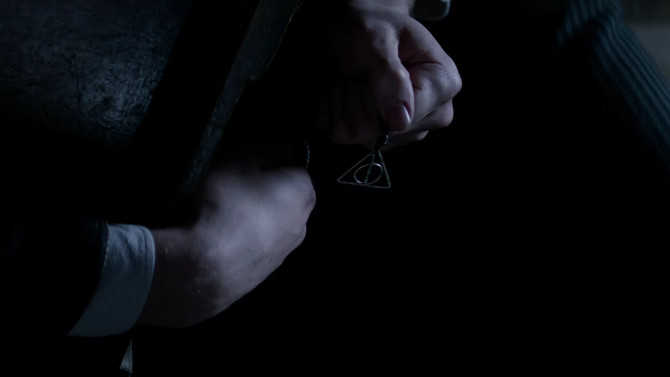As a change of pace, I thought that it would be fun to take a look at Fantastic Beasts and Where to Find Them, not from a review perspective, but rather, to connect some of the dots to the Harry Potter franchise (be it novels or movies). Right off the bat, we hear John Williams’ iconic score from the first Potter feature (when the Warner Bros. logo appears), which then transitions into an original composition from James Newton Howard.
Written for the screen by J.K. Rowling (her first time writing a script, there is no one better to build upon the imaginative world she created more than 20 years ago) and set in the Roaring 20s, specifically 1926, the story follows Newt Scamander (Eddie Redmayne) on his many adventures – the name may mean something to true Potter afficionados, as he is the author of one of the Hogwarts required textbooks, which just happens to have the same title as the film. The tale takes place just prior to said book’s publication, with the Brit taking a trip to New York City. As he explores the metropolis, many of you may chuckle when an anti-witch group leader asks, “are you a seeker?”, to which he slyly replies, “I’m more of a chaser, really” – a quidditch joke for those in the know.
With the main character being a magizoologist, there are a multitude of references to magical animals, with perhaps the most relevant to the Potter tale being the niffler. The cuddly, long-snouted, furry creature caught the eye of Ron Weasley in Goblet of Fire, mostly because it has a knack for collecting shiny (and valuable) trinkets – something the financially challenged teen thought would come in handy for raking in the gold. One of Scamander’s sneakiest beasts, he gets into all sorts of adorable yet thieving shenanigans in New York.
Taking a look at the darker side, it is very much hinted at throughout the story that Gellert Grindelwald will be a major force to reckon with in this new franchise. The Voldemort of his age, this equally threatening dark wizard is slowly taking over the world, causing loads of mayhem, leaving death and destruction in his violent wake. A hint (referencing the very important Deathly Hallows of the seventh Potter tale) also comes when an American auror, Graves (Colin Farrell) gifts a necklace with a specific insignia (triangle which holds a vertical line and circle) to a teen who is well positioned to spy for him.
Another possibility for the future, the one and only Albus Dumbledore is mentioned as a supporter of the animal loving Scamander – suggesting that he will eventually join the tale as the Grindelwald threat continues to grow. Strangely enough, Dumbledore and Grindelwald were friends as teens, only to grow apart as Grindelwald left Godric’s Hollow and began his conquest. On the other spectrum, Scamander was once friends with Leta Lestrange (a family well known for being into the dark arts) – the name will cause shivers for those who recall the vile, sadistic ways of her yet to be born relative, Bellatrix.
This is only the beginning. There are also references to spells we all know, debates over whether Hogwarts or the American version, Ilvermorny, is the better school (Scamander wears a yellow and grey Hufflepuff scarf towards the end of the film); there is also some confusion over the term No-Maj (muggles for those who talk in British wizardry terms), as well as call backs to visual gags from the original franchise and so much more. You will even spot several house elves and goblins, one, Gnarlack, an owner of a magical version of a speakeasy, is played by Ron Perlman.
This should give you a good basis for what to look for when watching, or re-watching, 2016’s Fantastic Beasts and Where to Find Them. Amongst all the magic, jazz and flappers of the 1920s, there is a franchise afoot here. With four more features to come, we will likely see more Potter-related connections in the upcoming films. Feel free to comment below with some of your own finds; I’d love to hear them.



